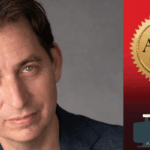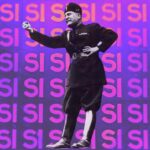Why write medieval mysteries?
I’ll start with the “medieval” half.
There are many assumptions about the medieval period in European history. It’s the Dark Ages, an era of monolithic religion, known best for superstition and ignorance, filthy streets and people, primitive art and music, contempt for women, and endemic violence. Why choose such a backward time to set books?
Because I’m quirky. Even in my very distant youth, when almost everyone else was enthralled with the current music, book, or fashion, I’d wander away because I noticed something odd that caught my attention. Don’t get me wrong. The Beatles were great, and I really enjoyed Dr. Zhivago (but not so much crinolines on hot days). It’s just that I have an insatiable curiosity about things that don’t get the spotlight.
This is how the Middle Ages entered my life. It began with Chaucer and The Canterbury Tales. For a teenager, what’s not to like about the guy. He was bawdy, funny, and took no prisoners when it came to exposing hypocrites. That book led me to read more literature of the time. Beowulf and Icelandic Sagas were gripping adventure tales. The Lancelot-Grail tales surprised me because one of them was not religious at all. Marie de France used well-known symbolism to talk about forbidden topics like gay love. And there were the non-fiction writers: Gerald of Wales, a man caught between two conflicting cultures; Christine de Pizan, who most certainly didn’t accept that women were “failed men”; Geoffroi de Charny, who wrote about PTSD in knights; Jocelin de Brakelond, a monk who discussed the involvement of the Abbot of Bury St. Edmunds in business and politics. Interspersed in that reading were our modern histories involving subjects like Eleanor of Aquitaine who played a significant role in running England while King Richard was gone; the Order of Fontevraud, a double order of monks and nuns run by a woman; the Sarum Master and his Amesbury Psalter with illuminations that hint of far more modern art; The Play of Daniel, an early form of opera; Licoricia of Winchester, a Jewish woman who was successful in business apart from her husband.
In short, and to my delight, the Middle Ages in Europe didn’t match common assumptions. Like every other period in history, it was complex, nuanced, contradictory, and full of surprises. I was hooked.
That brings me to the second part of the question. Why choose to write mysteries in that era?
First of all, my favorite fiction genre is the mystery. It deals with that most complex, troubling, and unnatural human act: murder. “Why” is more important to me as a reader than “who”, although, as a writer, both must be equally important.
In short, and to my delight, the Middle Ages didn’t match common assumptions. Like every other period in history, it was complex, nuanced, contradictory, and full of surprises.During what might be called the Golden Age of Medieval Mysteries, when Sharan Newman, Candace Robb, Peter Tremayne and others were delighting readers with historically sound books and gripping plots, I read them voraciously. I especially fell in love with Ellis Peters’ character, Brother Cadfael. He was my kind of guy: an outsider with no ambition to climb the religious corporate ladder, compassionate, perceptive, curious, a healer after being a crusader. When I finally decided to follow my lifelong dream to write, I knew I had both my genre and my era.
I also had a problem.
I’m not a professional historian. How could I write historicals with factual accuracy and correct era mentality? No way was I was going to produce costume dramas. But I also wanted readers to connect to the characters. Good storytelling demands compelling characters, not cardboard ones that move and speak like bad puppeteering.
Fortunately, most of my former jobs required good research and analysis techniques. Second, I had human nature going for me. We haven’t changed much in hundreds of years.
The research was the fun part. I began a list of discoveries to use in books. If I wanted to shatter erroneous ideas about the Middle Ages, readers must be delighted and surprised as I was.
I also had an excuse to create an amateur sleuth with valid reason to get involved in many crimes. As the head of a priory, Prioress Eleanor represents the interests of the Church. If a crime occurred on Church property or involved a religious, she had the legal authority to investigate, not the king. Throughout the medieval period, the Church and State were at constant war over power and how to get more of it. It was an interesting dynamic to explore.
There were other ongoing elements I wanted to include. The first was the question of medieval Christianity. It was a more complex faith than assumed, from the transformation of pagan gods into saints to the Marian devotions. Without question, it was also the dominant European faith, and history was written, as it always is, from the perspective of this ruling majority. Did no one else exist? My subversive little mind immediately asked: what about the English Jews? With any minority, a common survival technique is to be humble with authority, never argue, then come up with ways to circumvent the worst of bad situations. In private, human dignity does survive under oppression, the view of authority is not quite so slavish, and humor keeps one sane. I collected several Jewish medieval history books and devoured them like a hungry cat. These allowed me to add a more three-dimensional Jewish perspective and show the human cost of Edward I’s anti-Semitic policies in two books so far (Sanctity of Hate and Land of Shadows).
Another issue was how women were treated. Conventional wisdom did state that they were imperfect men, weak, illogical, and should never rule the sons of Adam. They were also prohibited from preaching, and, for the most part, had fewer legal rights than their lords.
That was one reality. Then there was the other one.
Writing medieval mysteries has not only let me tell what happened in England in the late thirteenth century, but, as E. L. Doctorow said, what it felt like.When a man left the castle or business, he chose the one person he could trust most to be in charge: quite often, his wife (the Paston family) or his mother (Eleanor of Aquitaine). Another intriguing exception to the prohibition against women ruling men was the Order of Fontevraud, a double house of monks and nuns founded in Anjou which was run by women. The rationale was that the abbess/prioress represented the Virgin Mary, and the monks owed this earthly woman the respect and obedience any son owes his mother. (My prioress belongs to this Order, but she remains a medieval woman who knows how to get medieval men to cooperate.) Finally, we have the prohibition against women preaching. That didn’t apply to anchoresses (Julian of Norwich). They got around the rule by claiming they were just conduits. God used their tongues to pass on wisdom. (There is an anchoress at my fictitious Tyndal Priory.)
The other element of medieval history I was surprised into including was homosexuality—and I do mean surprised.
For practical reasons, I needed a male sleuth to do things my prioress couldn’t. Prioress Eleanor does not suffer fools gladly. She wouldn’t tolerate a Dr. Watson. But she is also aged twenty at the series start, raised at Amesbury Priory, and biology is biology. Enter Brother Thomas who is intelligent, well-educated, and handsome. I knew what was likely to happen despite her sincere vocation, and no way did I want love scenes in the monastic hayloft. This was not good. But as I was falling asleep one night, a voice whispered in my ear. It was the monk. “Don’t worry,” he said. “I’m gay!” My response? “Do you realize how much research this forces me to do?”
Writing Brother Thomas has been interesting. There was no such word as homosexuality in the medieval period. There was no gay community. Sodomy was a catch-all term for many kinds of unacceptable sexual activity. The sin was in who did what to whom, the seriousness on whether a person adhered to expected behavior for their determined gender. The views of the Church on punishments, depending on the era, varied from wrist slaps to burning at the stake. Following Brother Thomas as he struggles with melancholia, loneliness, temptations, honoring vows he never wanted to take, and trying to find peace is an ongoing education. I might not have originally chosen to make that an aspect of the series, but I am grateful he decided I must.
History, per Thomas Carlyle, is the essence of innumerable biographies. It’s the way we should learn it if we are to understand the lessons it has to teach and recognize the warnings of dark times coming. Past eras are filled with our ancestors, our families. They suffered from enslavement, genocide, starvation, disease, and cruel deaths. They also fell in love, played with their children, and sighed with pleasure over a beautiful summer morning. Human nature has remained the same, despite differences in fashion, languages, and the common symbols on which to base logic. Writing medieval mysteries has not only let me tell what happened in England in the late thirteenth century, but, as E. L. Doctorow said, what it felt like. I have tried to intrigue readers with an era far more complex than we may have been taught, show how people have always rationalized things that run against conventional wisdom, and point out that, even in benighted times, there are always those who act with compassion, courage, and reason.

















